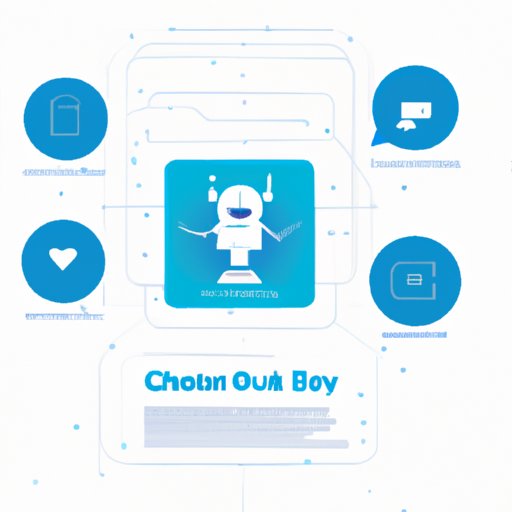Introduction
Customer experience (CX) technology is a combination of tools, applications, data, and processes used to create an optimal experience for customers throughout their journey. It is based on the idea that customers should be at the center of any business strategy, and it incorporates digital solutions such as artificial intelligence (AI), chatbots, voice assistants, and automated messaging to create a personalized, seamless experience.
Benefits of CX Technology
CX technology offers many benefits to businesses, including improved customer experiences, increased customer loyalty, and enhanced business performance. It can also help businesses save money by reducing operational costs and increasing efficiency.
Improving Customer Experiences
CX technology helps businesses create more engaging and personalized customer experiences. By using AI, businesses can collect and analyze customer data to understand customer needs and preferences. This allows them to tailor content to meet those needs and offer more relevant products and services. Additionally, automated messaging and chatbots can provide quick responses to customer inquiries, helping businesses provide faster and more efficient customer service. Finally, voice assistants enable customers to interact with businesses in natural language, providing a more personal experience.
Enhancing Business Performance
CX technology can also enhance business performance by increasing customer loyalty and satisfaction. Studies have shown that customers are more likely to remain loyal to a brand if they have a positive experience. Additionally, CX technology can help businesses increase sales by providing personalized recommendations and discounts to customers. Additionally, by automating routine tasks, CX technology can reduce overhead costs and increase efficiency.
Different Types of CX Technologies
There are several types of CX technologies available, each offering different benefits to businesses. These include:
Artificial Intelligence (AI)
AI is a type of technology that enables machines to imitate human behavior. AI-powered tools can be used to collect, analyze, and interpret customer data to gain insights into customer behavior and preferences. AI can also be used to automate routine tasks, such as responding to customer inquiries or providing personalized product recommendations.
Chatbots
Chatbots are automated programs that use AI to simulate conversations with customers. They can be used to answer customer queries, provide personalized product recommendations, and even upsell products and services.
Voice Assistants
Voice assistants are AI-powered tools that enable customers to interact with businesses in natural language. They can be used to answer customer inquiries, provide product information, and even process orders.
Automated Messaging
Automated messaging is a type of technology that enables businesses to send automated messages to customers. These messages can be used to provide updates on order status, offer discounts and promotions, or simply keep customers informed about new products and services.
Case Studies
The following case studies demonstrate how businesses have successfully implemented CX technology to improve customer experiences and enhance business performance.
Company A
Company A is a retail store that has implemented AI-powered chatbots to provide customer support. The chatbots respond to customer inquiries quickly and accurately, allowing customers to get answers to their questions without needing to wait for a human customer service representative. As a result, customer satisfaction has increased, and customer inquiries are handled more efficiently.
Company B
Company B is an online retailer that has implemented voice assistants to provide personalized product recommendations. The voice assistants use customer data to suggest products and services that match their preferences, resulting in increased sales and customer loyalty. Additionally, the voice assistants have enabled Company B to provide better customer service by providing quicker responses to customer inquiries.
Company C
Company C is a travel company that has implemented automated messaging to keep customers informed about their orders. The automated messages provide updates on order status, which have resulted in increased customer satisfaction and loyalty. Additionally, the automated messages have helped Company C save time and money by reducing the need for manual customer service.
Future of CX Technology
As CX technology continues to evolve, there are several emerging trends and technologies to look out for. These include predictive analytics, augmented reality, and virtual reality. Additionally, businesses should be mindful of potential challenges associated with CX technology, such as data privacy and security concerns.
Conclusion
CX technology offers many benefits to businesses, including improved customer experiences, increased customer loyalty, and enhanced business performance. Different types of CX technologies, such as AI, chatbots, voice assistants, and automated messaging, can be used to create a personalized, seamless experience for customers. Case studies demonstrate how businesses have successfully implemented CX technology to improve customer experiences and enhance business performance. As CX technology continues to evolve, businesses should be aware of emerging trends and technologies as well as potential challenges.
(Note: Is this article not meeting your expectations? Do you have knowledge or insights to share? Unlock new opportunities and expand your reach by joining our authors team. Click Registration to join us and share your expertise with our readers.)
